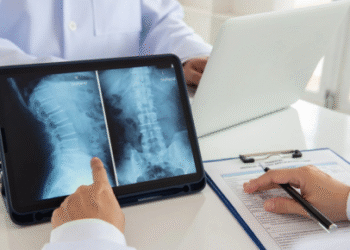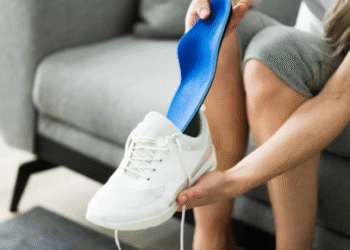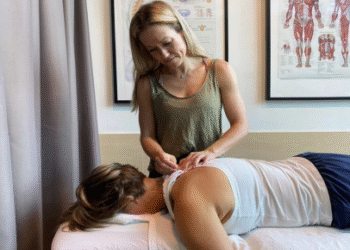Ever caught yourself slouching at your desk or hunching over your phone? You’re not alone. Poor posture has become a common issue in our tech-driven world, leading to a myriad of health problems like back pain, neck strain, and even reduced lung function.
I’ve explored various posture correction tools that promise to improve health and well-being. From ergonomic chairs to wearable devices, these tools can help you maintain proper alignment and alleviate discomfort.
Let’s dive into how these innovations can transform your daily life. For more information on maintaining proper posture and enhancing your overall health, explore holistic life coaching and wellness programs that offer personalized strategies for improving posture and well-being.
Overview of Posture Correction Tools
Posture correction tools come in various forms, each addressing specific posture issues. Ergonomic chairs support the natural curve of the spine, reducing back pain. These chairs, equipped with adjustable features, ensure proper alignment and comfort during prolonged sitting.
Wearable devices, like posture correctors and smart sensors, provide real-time feedback. Posture correctors gently pull the shoulders back, encouraging an upright stance, while smart sensors vibrate to alert users when they slouch, promoting awareness and correction.
Standing desks allow for alternating between sitting and standing, relieving pressure on the spine. Adjustable heights make it easy to switch positions, enhancing circulation and reducing discomfort.
Exercise equipment, such as stability balls and resistance bands, strengthens core muscles. A strong core supports the spine, fostering better posture. Stability balls can be used as alternative seating options, engaging core muscles while sitting.
Incorporating these tools into daily routines can significantly improve posture, leading to better health and well-being.
Types of Posture Correction Tools
Improving posture involves various tools designed to address different needs. Below are some specific categories.
Braces and Supports
Braces and supports provide external stability to maintain proper posture. These devices, worn on the upper back and shoulders, help users keep their spines aligned. Soft posture braces use lightweight, elastic materials, while rigid braces offer more structured support. Using them consistently can train muscles to maintain correct posture even without the brace.
Posture Corrector Apps
Posture corrector apps use smartphone sensors to monitor and improve posture. These apps provide real-time feedback and reminders, encouraging users to adjust their posture throughout the day. Popular features include daily posture tracking, personalized exercise routines, and progress reports. Apps like Upright and PostureZone use technology to make posture correction accessible and convenient.
Ergonomic Furniture
Ergonomic furniture includes items like chairs, desks, and accessories designed to support natural body alignment. Ergonomic chairs often feature adjustable lumbar support, armrests, and seat height to reduce strain. Standing desks allow users to switch between sitting and standing, promoting movement. Keyboard trays and monitor stands help maintain a neutral position for the wrists and neck.
Exercise Equipment
Exercise equipment strengthens muscles that support good posture. Stability balls engage core muscles while sitting, promoting active sitting. Resistance bands offer versatile options for exercises targeting back and shoulder muscles. Foam rollers aid in muscle release and flexibility, essential for maintaining an upright posture. Incorporating these tools into workout routines can significantly enhance posture over time.
Benefits of Using Posture Correction Tools
Using posture correction tools offers several advantages, improving both physical and mental health, as well as long-term well-being.
Physical Health Benefits
Posture correction tools alleviate discomfort and reduce pain in the neck, shoulders, and lower back. Good posture enhances balance and stability, decreasing the risk of injuries. These tools support spinal alignment, preventing conditions like kyphosis and scoliosis. Ergonomic chairs, for instance, maintain the spine’s natural curve, reducing strain during prolonged sitting.
Mental Health Benefits
Proper posture positively affects mental well-being. Individuals often report feeling more confident and alert when maintaining good posture. Posture improvement tools can boost mood by reducing physical discomfort. As a result, this can lead to enhanced focus and productivity in daily tasks.
Long-term Well-being
Consistently using posture correction tools contributes to long-term health benefits. Mitigated risk of chronic conditions like musculoskeletal disorders improves quality of life. Regular use of these tools can prevent the development of posture-related complications in the future. Over time, the body adjusts to better posture habits, promoting overall stability and health.
How to Choose the Right Posture Correction Tool
Selecting the right tool for posture correction is crucial for achieving the best results. Consider these factors to make an informed decision.
Assessing Your Needs
First, identify areas of discomfort or pain. Determine if the issue is primarily in the neck, back, shoulders, or hips. For example, neck pain might require a particular ergonomic chair while backache might benefit from a standing desk. It’s also essential to consider your daily activities. Those who spend long hours at a desk might find ergonomic chairs or standing desks more beneficial, while active individuals might prefer wearable devices or exercise equipment.
Consulting Health Professionals
Consult a healthcare provider before starting any posture correction regimen, especially if experiencing chronic pain. Physicians, chiropractors, or physical therapists can provide expert advice tailored to individual health needs. They can recommend specific tools like lumbar supports for those with lower back pain or posture braces if shoulder alignment is of concern. Professional guidance ensures the selected tools effectively address your problems and reduce the risk of injury.
Reading User Reviews
Read user reviews to gauge the effectiveness and comfort of posture correction tools. Look for comments on ease of use, durability, and effectiveness. For instance, highly-rated ergonomic chairs often mention comfort during extended use and noticeable pain reduction. Conversely, a wearable device with negative reviews might indicate discomfort or poor build quality. User insights provide practical feedback, helping you avoid products that don’t meet your expectations.
Selecting the right tool involves assessing personal needs, consulting health experts, and reading user reviews. This approach increases the likelihood of finding effective posture correction tools that enhance your health and well-being.
Tips for Effective Use of Posture Correction Tools
Using posture correction tools can significantly improve health and well-being. It’s crucial to employ these tools consistently and effectively to achieve the best results.
Consistency and Commitment
Consistency plays a pivotal role in posture correction. Regularly using posture correction tools, such as ergonomic chairs, wearables, or exercise equipment, promotes muscle memory and reinforces proper posture habits. Without commitment, it’s difficult to see lasting improvement. Set a daily schedule, integrating the use of these tools into routine activities, to ensure they help in posture correction effectively.
Combining with Exercise
Exercise enhances the effectiveness of posture correction tools. Strengthening core muscles and improving flexibility contribute to better posture. Activities like yoga, Pilates, and strength training particularly target areas affected by poor posture, such as the back, shoulders, and neck. Pairing these exercises with posture correction tools maximizes their benefits, leading to a more balanced and healthy physique.
Monitoring Your Progress
Monitoring progress helps in making necessary adjustments and staying motivated. Using apps or wearables that track posture improvements gives insights into how well the tools are working. Regularly reviewing posture changes, alongside consulting with health professionals, ensures that you’re on the right path to achieving optimal posture.
















